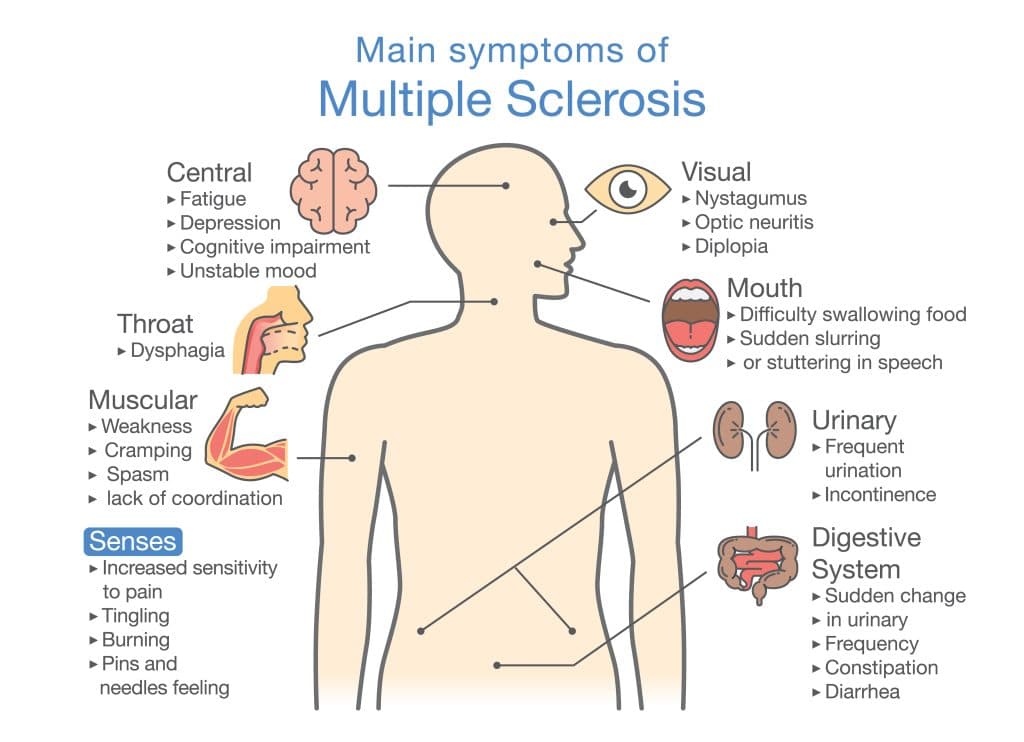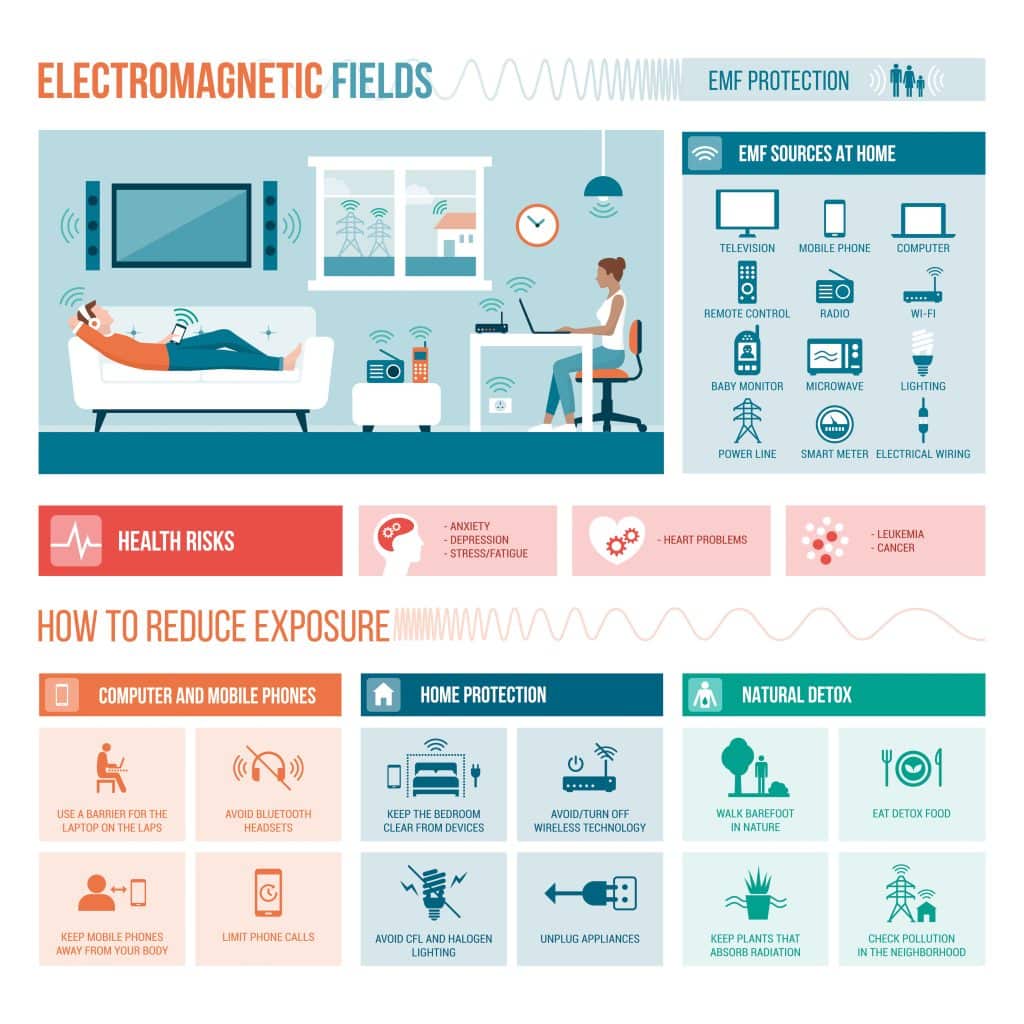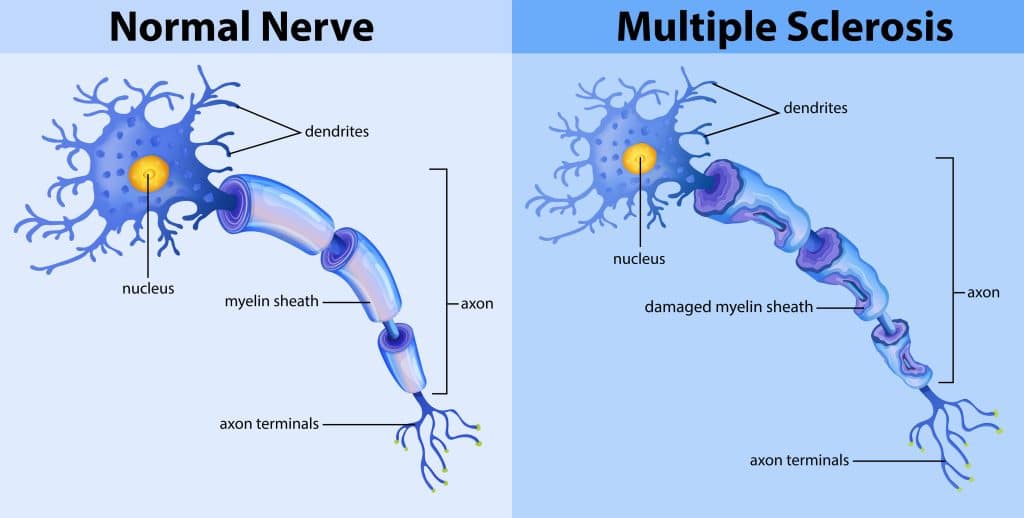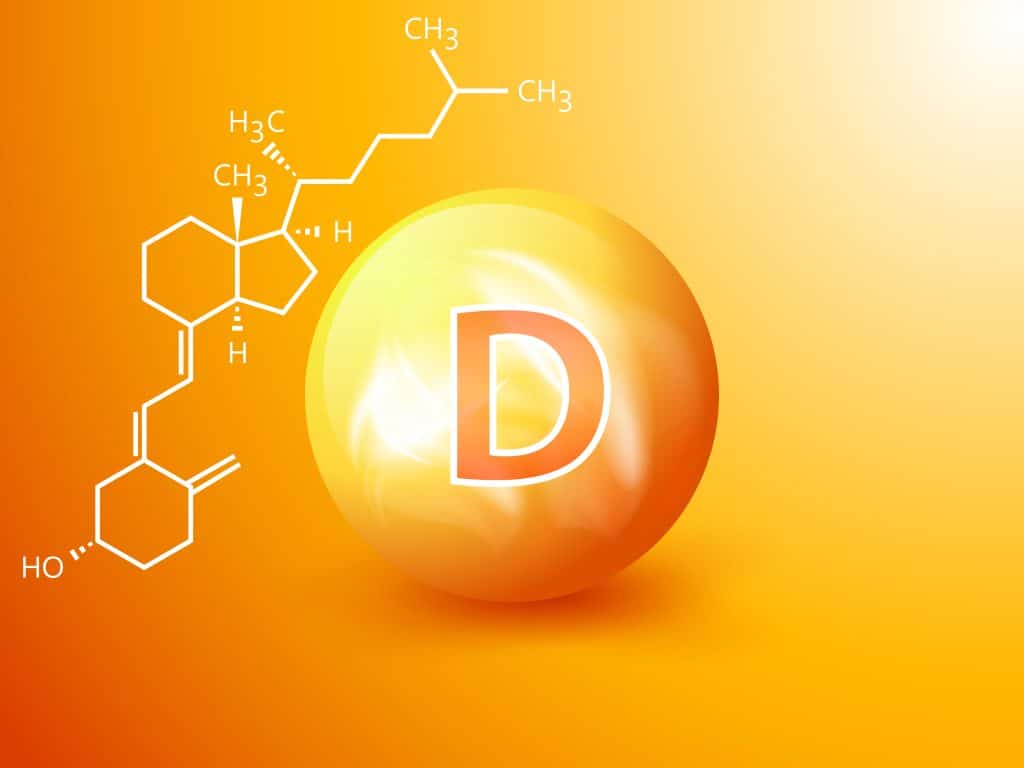What Causes Multiple Sclerosis – And Is There Any Way To Reverse It?
Multiple sclerosis (MS) is an autoimmune condition where the body’s immune system mistakenly attacks the protective coating around nerve cells, leading to serious physical and cognitive impairments. If you want to know what causes multiple sclerosis, realize that there are many factors that can contribute to its development. Genetics plays a role, as certain genetic mutations have been linked to MS and people with a family history of MS are more likely to develop the condition.
Environmental triggers such as exposure to certain toxins or viruses may also play a role in triggering the autoimmune response associated with MS. Additionally, lifestyle factors such as smoking and lack of physical activity can contribute to the development of MS. Finally, changes in the immune system due to hormonal imbalances or a weakened immune system may also be associated with MS.
What Causes Multiple Sclerosis – Genetics
The chances of developing MS increase if the disease runs in the family. Studies have found that having a close relative with MS increases your risk for the condition compared to someone without such a family history.1
While genetics are linked to MS, it’s usually attributed to a combination of genetic and environmental factors. This means that something in the environment triggers an autoimmune response in people with a specific genetic predisposition.
What Causes Multiple Sclerosis – Lifestyle Factors
Lifestyle factors play a role in the development of multiple sclerosis. People who smoke, consume an unhealthy diet, are obese, or don’t get enough physical activity are at greater risk for developing MS.23 4
Additionally, research suggests that people exposed to certain environmental triggers such as Epstein-Barr viral infections, air pollution, and electromagnetic fields may also be at greater risk.5 6 7 It is important to lead a healthy lifestyle and minimize exposure to environmental triggers in order to lower the risk of developing multiple sclerosis.

What Causes Multiple Sclerosis – Hormonal Imbalances
Women are more susceptible to MS than men, and this may be due to the effects of female hormones on the immune system. Hormone imbalances can play a role in the development of multiple sclerosis. Hormonal imbalances are thought to weaken the body’s ability to regulate the immune system and make it more susceptible to inflammation, which can damage the myelin sheath that insulates nerve fibers in the central nervous system.8
Hormonal imbalances can affect MS by disrupting the body’s ability to produce adequate amounts of steroids and other hormones necessary for healthy immune system regulation. Low levels of steroid hormones, such as cortisol and testosterone, may contribute to higher rates of inflammation in the body.9
Other hormonal imbalances that have been linked to an increased risk of developing MS include thyroid hormone deficiencies, vitamin D deficiency, and prolactin deficiency.1011 12
What Causes Multiple Sclerosis – Air Pollution
One environmental factor that has been linked to an increased risk of developing MS is air pollution. These pollutants enter the body through the nose or mouth and travel to the lungs, where they cause inflammation.13 This inflammation may contribute to an increased risk of developing MS by damaging nerve cells in the brain or interfering with signals between nerves and muscles.6
Studies have found that people who live in areas with higher levels of air pollution are more likely to develop MS than those living in less polluted environments. This link is especially pronounced among people exposed to air pollution during childhood or adolescence. The risk of developing MS appears to be greatest when high levels of air pollution occur on a regular basis over an extended period of time.14
What Causes Multiple Sclerosis – Electromagnetic Fields
Some studies have associated higher levels of EMF exposure with an increased risk of developing multiple sclerosis. For example, one study found that mice exposed to an EMF frequency of 835 MHz for 5 hours a day, that mimicked cellular phone use, suffered from myelin sheath damage after only 12 weeks.15
Some ways to reduce exposure to EMFs include limiting time spent around electrical appliances such as computers, cell phones, tablets, and televisions. Additionally, one can use shielding devices or window films to reduce the amount of EMF radiation entering the home. Finally, it’s important to be aware of the potential health risks of EMFs and take whatever steps necessary to limit your exposure as much as possible.

What Causes Multiple Sclerosis – Heavy Metals
While there are many theories about what causes multiple sclerosis, one potential culprit may be heavy metals. Heavy metals such as cadmium and arsenic can trigger the development of chronic inflammation, which can lead to autoimmunity and create an environment where MS can develop.16
Exposure to heavy metals may come from a variety of sources including long-term occupational exposure, contaminated drinking water, and certain household products as well as cosmetics that contain traces of heavy metals. It is also possible for heavy metal poisoning to occur due to accidental ingestion, poor oral hygiene and dental work, or contaminated soil.
Read more about common toxins we take for granted.
Research suggests that a combination of environmental factors including exposure to heavy metals can increase the risk of MS. For example, studies have found that individuals who have higher levels of lead in their blood are more likely to develop MS than those with lower levels. Additionally, individuals who have been exposed to higher concentrations of mercury, arsenic, and other heavy metals appear to be more likely to develop MS than those who haven’t been exposed.17
Although the exact link between heavy metal exposure and MS is still not fully understood, it is clear that there is an association between the two. It is important to be aware of the potential sources of heavy metal exposure and take steps to reduce your risk, such as avoiding certain types of fish or seafood, using protective gear during occupational exposure, and staying away from contaminated tap water.
What Causes Multiple Sclerosis – Mold Exposure
Mold exposure has been linked to multiple sclerosis as a potential environmental trigger. Mold is found in both indoor and outdoor environments, and research has found that the accumulation of mold spores in the air can cause an allergic response that could lead to MS symptoms. Symptoms of mold allergies include sneezing, coughing, wheezing, headaches, asthma, and fatigue.18
Read more about how mold is linked to many health conditions.

Toxins Cause Chronic Inflammation And Result In Autoimmune Conditions
Continuous exposure to toxins results in chronic inflammation and are what causes multiple sclerosis. When the body is overburdened with toxins, it begins to mount an overly aggressive immune response that can lead to chronic inflammation. This type of inflammation is characterized by low-grade persistent inflammation that occurs over a long period of time.
When toxins continually overwhelm the body, it can lead to autoimmune conditions, meaning the immune system mistakenly attacks healthy cells and tissues instead of foreign invaders. The resulting chronic inflammation leads to an array of symptoms such as fatigue, joint pain, skin issues, digestive disturbances, and even MS. This is why it’s important to reduce exposure to toxins and focus on the body’s ability to detoxify in order to minimize inflammation.
Read more about autoimmune conditions.
How Inflammation Manipulates Epigenetic Expression
Inflammatory cytokines not only cause physical changes in the body, but they can also affect gene expression by altering epigenetic mechanisms that regulate gene transcription associated with MS.19 Epigenetics is the study of how genes are expressed without changing their underlying DNA sequence. The way these processes work together is called “epigenetic regulation.”
When the body is inflamed, cytokines can bind to epigenetic factors, including DNA methylation and histone acetylation, and cause changes in gene expression that are not present before the inflammation. For example, certain inflammatory cytokines have been shown to reduce levels of histone acetyltransferase (HAT), an enzyme that helps activate gene transcription. In other cases, inflammatory cytokines can increase DNA methylation in certain areas of the genome.20
These changes in epigenetic expression can have a profound effect on many cellular functions, including metabolism, growth and differentiation, and immune response. For instance, changes in histone acetylation due to inflammation can lead to increased expression of pro-inflammatory genes and decreased expression of anti-inflammatory genes. This in turn can lead to a heightened immune response and the production of too many inflammatory cytokines, which can cause excessive damage.21
The fact that inflammation can affect gene expression through epigenetic regulation explains how autoimmune conditions like MS stem from a combination of genetic and environmental factors.
Removing Toxins From Your Life And Optimizing Epigenetic Expression
A key part of optimizing epigenetic expression is reducing your exposure to toxins. You can reduce your exposure to toxins by avoiding products with known harmful substances, switching to non-toxic alternatives, and reducing your consumption of processed foods.
It’s also important to pay attention to the air you breathe. Air pollution is one of the most pervasive forms of toxicity in modern life, as it contains a wide variety of chemical pollutants that can damage your health over time. To reduce your exposure to air pollution, you can take steps such as avoiding areas with high levels of traffic or industrial activity, using an indoor air purifier and opting for more natural cleaning products.
Stress is another major source of epigenetic disruption. Chronic stress can cause a cascade of physiological changes that lead to alterations in gene expression and increase your risk for a variety of health problems. To reduce the impact stress has on your body, it’s important to prioritize self-care and make time for activities that help you relax and unwind. Taking up yoga or mindfulness practices can be beneficial in this regard, as they can help you learn how to better manage stressful situations and cultivate inner peace.
Finally, it’s important to make sure you’re getting the vitamins and minerals your body needs for optimal epigenetic expression. In the cases of MS, taking a vitamin D supplement is a good idea, as low vitamin D levels are common among people with MS.22
Eating a nutritious diet and supplementing accordingly can help ensure that your cells are receiving all of the necessary nutrients for healthy gene expression.

What Causes Multiple Sclerosis – And How You Can Reduce Your Risk
By making conscious decisions about lifestyle choices, you can target what causes multiple sclerosis and reduce your risk of epigenetic disruption by optimizing your body’s ability to express the genes it needs for optimal health. By removing toxins from your environment, managing stress levels, and providing your cells with the nutrients they need like vitamin D, you can help ensure that your body is able to express its genetic potential in the most beneficial ways.
Read more about autoimmune conditions.
References
1 Canto, E., & Oksenberg, J. R. (2018). Multiple sclerosis genetics. Multiple sclerosis (Houndmills, Basingstoke, England), 24(1), 75–79. https://doi.org/10.1177/1352458517737371
2 Koch, M.W., Mostert, J., Repovic, P. et al. Smoking, obesity, and disability worsening in PPMS: an analysis of the INFORMS original trial dataset. J Neurol 269, 1663–1669 (2022). https://doi.org/10.1007/s00415-021-10750-z
3 Esposito, S., Bonavita, S., Sparaco, M., Gallo, A., & Tedeschi, G. (2018). The role of diet in multiple sclerosis: A review. Nutritional neuroscience, 21(6), 377–390. https://doi.org/10.1080/1028415X.2017.1303016
4 Motl R. W. (2020). Exercise and Multiple Sclerosis. Advances in experimental medicine and biology, 1228, 333–343. https://doi.org/10.1007/978-981-15-1792-1_22
5 Bjornevik, K., Cortese, M., Healy, B. C., Kuhle, J., Mina, M. J., Leng, Y., Elledge, S. J., Niebuhr, D. W., Scher, A. I., Munger, K. L., & Ascherio, A. (2022). Longitudinal analysis reveals high prevalence of Epstein-Barr virus associated with multiple sclerosis. Science (New York, N.Y.), 375(6578), 296–301. https://doi.org/10.1126/science.abj8222
6 Farahmandfard, M. A., Naghibzadeh-Tahami, A., & Khanjani, N. (2021). Ambient air pollution and multiple sclerosis: a systematic review. Reviews on environmental health, 36(4), 535–544. https://doi.org/10.1515/reveh-2020-0079
7 Redmayne, M., & Johansson, O. (2014). Could myelin damage from radiofrequency electromagnetic field exposure help explain the functional impairment electrohypersensitivity? A review of the evidence. Journal of toxicology and environmental health. Part B, Critical reviews, 17(5), 247–258. https://doi.org/10.1080/10937404.2014.923356
8 Karagkouni, A., Alevizos, M., & Theoharides, T. C. (2013). Effect of stress on brain inflammation and multiple sclerosis. Autoimmunity reviews, 12(10), 947–953. https://doi.org/10.1016/j.autrev.2013.02.006
9 Avila, M., Bansal, A., Culberson, J., & Peiris, A. N. (2018). The Role of Sex Hormones in Multiple Sclerosis. European neurology, 80(1-2), 93–99. https://doi.org/10.1159/000494262
10 Wooliscroft, L., Altowaijri, G., Hildebrand, A., Samuels, M., Oken, B., Bourdette, D., & Cameron, M. (2020). Phase I randomized trial of liothyronine for remyelination in multiple sclerosis: A dose-ranging study with assessment of reliability of visual outcomes. Multiple sclerosis and related disorders, 41, 102015. https://doi.org/10.1016/j.msard.2020.102015
11 Shuster E. A. (2008). Hormonal influences in multiple sclerosis. Current topics in microbiology and immunology, 318, 267–311. https://doi.org/10.1007/978-3-540-73677-6_11
12 Zhornitsky, S., Yong, V. W., Weiss, S., & Metz, L. M. (2013). Prolactin in multiple sclerosis. Multiple sclerosis (Houndmills, Basingstoke, England), 19(1), 15–23. https://doi.org/10.1177/1352458512458555
13 Chen, X., Han, Y., Chen, W., Wang, Y., Qiu, X., Li, W., Hu, M., Wu, Y., Wang, Q., Zhang, H., & Zhu, T. (2020). Respiratory Inflammation and Short-Term Ambient Air Pollution Exposures in Adult Beijing Residents with and without Prediabetes: A Panel Study. Environmental health perspectives, 128(6), 67004. https://doi.org/10.1289/EHP4906
14 Noorimotlagh, Z., Azizi, M., Pan, H. F., Mami, S., & Mirzaee, S. A. (2021). Association between air pollution and Multiple Sclerosis: A systematic review. Environmental research, 196, 110386. https://doi.org/10.1016/j.envres.2020.110386
15 Kim, J. H., Yu, D. H., Huh, Y. H., Lee, E. H., Kim, H. G., & Kim, H. R. (2017). Long-term exposure to 835 MHz RF-EMF induces hyperactivity, autophagy and demyelination in the cortical neurons of mice. Scientific reports, 7, 41129. https://doi.org/10.1038/srep41129
16 Sarihi, S., Niknam, M., Mahjour, S., Hosseini-Bensenjan, M., Moazzen, F., Soltanabadi, S., & Akbari, H. (2021). Toxic heavy metal concentrations in multiple sclerosis patients: A systematic review and meta-analysis. EXCLI journal, 20, 1571–1584. https://doi.org/10.17179/excli2021-3484
17 Napier, M. D., Poole, C., Satten, G. A., Ashley-Koch, A., Marrie, R. A., & Williamson, D. M. (2016). Heavy metals, organic solvents, and multiple sclerosis: An exploratory look at gene-environment interactions. Archives of environmental & occupational health, 71(1), 26–34. https://doi.org/10.1080/19338244.2014.937381
18 Purzycki, C. B., & Shain, D. H. (2010). Fungal toxins and multiple sclerosis: a compelling connection. Brain research bulletin, 82(1-2), 4–6. https://doi.org/10.1016/j.brainresbull.2010.02.012
19 Hasheminia, S. J., Tolouei, S., Zarkesh-Esfahani, S. H., Shaygannejad, V., Shirzad, H. A., Torabi, R., & Hashem Zadeh Chaloshtory, M. (2015). Cytokines gene expression in newly diagnosed multiple sclerosis patients. Iranian journal of allergy, asthma, and immunology, 14(2), 208–216.
20 Feng, D., Sangster-Guity, N., Stone, R., Korczeniewska, J., Mancl, M. E., Fitzgerald-Bocarsly, P., & Barnes, B. J. (2010). Differential requirement of histone acetylase and deacetylase activities for IRF5-mediated proinflammatory cytokine expression. Journal of immunology (Baltimore, Md. : 1950), 185(10), 6003–6012. https://doi.org/10.4049/jimmunol.1000482
21 Rahman, I., Marwick, J., & Kirkham, P. (2004). Redox modulation of chromatin remodeling: impact on histone acetylation and deacetylation, NF-kappaB and pro-inflammatory gene expression. Biochemical pharmacology, 68(6), 1255–1267. https://doi.org/10.1016/j.bcp.2004.05.042
22 Ascherio, A., Munger, K. L., White, R., Köchert, K., Simon, K. C., Polman, C. H., Freedman, M. S., Hartung, H. P., Miller, D. H., Montalbán, X., Edan, G., Barkhof, F., Pleimes, D., Radü, E. W., Sandbrink, R., Kappos, L., & Pohl, C. (2014). Vitamin D as an early predictor of multiple sclerosis activity and progression. JAMA neurology, 71(3), 306–314. https://doi.org/10.1001/jamaneurol.2013.5993









